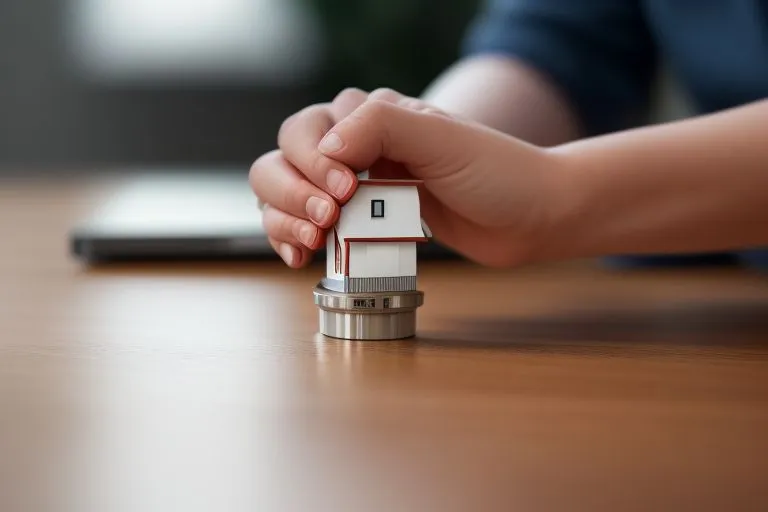
Buying a home is one of the most exciting and important decisions you’ll make. A big part of this process is finding the best mortgage rate. A lower rate can save you a lot of money over the life of your loan. But how do you get the best rate possible? Don’t worry. We’ve got some simple tips and tricks to help you out.
Understand What Affects Mortgage Rates
Before diving into the tips, it’s important to understand what influences mortgage rates. Here are the key factors:
- Credit Score: Your credit score is one of the most important factors. Higher scores generally mean better rates.
- Down Payment: The more you can put down upfront, the better your rate might be. A larger down payment reduces the lender’s risk.
- Loan Type and Term: Different types of loans (fixed-rate, adjustable-rate) and terms (15 years, 30 years) come with different rates.
- Current Market Conditions: Interest rates can fluctuate based on economic conditions. Staying informed can help you choose the right time to lock in a rate.
Tips and Tricks to Get the Best Mortgage Rates
1. Improve Your Credit Score
Your credit score plays a huge role in the mortgage rate you get. Here are some ways to boost it:
- Pay Bills on Time: Consistent, on-time payments improve your credit score.
- Reduce Debt: Lowering your credit card balances can have a positive impact.
- Avoid New Credit: Don’t open new credit accounts or take on new debt when you’re about to apply for a mortgage.
2. Save for a Larger Down Payment
A larger down payment can help you secure a better mortgage rate. Aim for at least 20% of the home’s price. Here’s why:
- Lower Risk for Lenders: A larger down payment means the lender is taking on less risk.
- Avoid PMI: With a 20% down payment, you can avoid private mortgage insurance, which reduces your monthly payments.
3. Shop Around and Compare Offers
Different lenders offer different rates. It’s worth shopping around and comparing offers. Here’s how:
- Get Multiple Quotes: Reach out to at least three to five lenders.
- Negotiate: Don’t be afraid to ask lenders to match or beat other offers.
- Consider Different Lenders: Look at traditional banks, credit unions, and online lenders.
4. Lock in Your Rate
Once you find a good rate, ask your lender about locking it in. This ensures that the rate won’t change before you close on your home. Here’s what to consider:
- Lock Period: Rate locks can vary from 30 to 60 days. Make sure the lock period is long enough to cover the time it takes to close on your home.
- Fees: Some lenders may charge a fee to lock in a rate. Weigh this cost against the potential savings.
5. Consider Points and Credits
Mortgage points and lender credits can affect your rate. Understanding these can help you get a better deal:
- Mortgage Points: Paying points means paying upfront to lower your interest rate. Each point is typically 1% of the loan amount.
- Lender Credits: Lender credits reduce your closing costs but increase your interest rate. This might be beneficial if you’re short on cash upfront.
6. Opt for a Shorter Loan Term
Shorter loan terms usually come with lower interest rates. While your monthly payments will be higher, you’ll pay less in interest over the life of the loan. Here’s a quick comparison:
- 15-Year Loan: Higher monthly payments but lower interest rate and less interest paid overall.
- 30-Year Loan: Lower monthly payments but higher interest rate and more interest paid over time.
7. Maintain Stable Employment
Lenders prefer borrowers with stable employment. Here’s why:
- Job Stability: Having a steady job and consistent income reassures lenders that you can make your monthly payments.
- Avoid Job Changes: If possible, avoid changing jobs or careers before applying for a mortgage. Lenders like to see at least two years of employment in the same field.
8. Reduce Your Debt-to-Income Ratio
Your debt-to-income ratio (DTI) is the percentage of your monthly income that goes toward debt payments. A lower DTI can help you get a better rate. Here’s how to improve it:
- Pay Off Debt: Focus on paying down credit card balances and other loans.
- Increase Income: Consider ways to increase your income, such as a side job or asking for a raise.
9. Consider Different Loan Types
Different types of loans come with different rates. Here’s a brief overview:
- Fixed-Rate Mortgage: Your interest rate stays the same for the entire loan term. This provides stability but might have a higher rate than an ARM.
- Adjustable-Rate Mortgage (ARM): Your rate is fixed for an initial period (usually 5, 7, or 10 years) and then adjusts annually. Initial rates are often lower than fixed-rate mortgages.
- FHA Loans: These are backed by the Federal Housing Administration and often have lower rates, especially for first-time homebuyers.
- VA Loans: Available to veterans and active military members, VA loans often come with competitive rates and don’t require a down payment.
10. Stay Informed About the Market
Mortgage rates can change based on economic conditions. Staying informed can help you choose the best time to lock in a rate. Here’s how:
- Monitor Rate Trends: Keep an eye on mortgage rate trends and forecasts.
- Consult Experts: Talk to mortgage advisors or financial experts about the best time to lock in your rate.
Practical Steps to Get Started

Now that you know the tips and tricks, here are some practical steps to help you get started:
- Check Your Credit Report: Obtain a free copy of your credit report and review it for any errors. Dispute any inaccuracies you find.
- Create a Budget: Determine how much you can afford for a down payment and monthly mortgage payments.
- Get Pre-Approved: Before shopping for a home, get pre-approved for a mortgage. This shows sellers you’re a serious buyer and helps you understand how much you can afford.
- Gather Documentation: Lenders will require documents such as pay stubs, tax returns, and bank statements. Start gathering these early to streamline the application process.
- Consult a Mortgage Advisor: Schedule a meeting with a mortgage advisor to discuss your options and get personalized advice.
Final Thoughts
Finding the best mortgage rate doesn’t have to be stressful. By understanding the factors that influence rates and taking proactive steps to improve your financial situation, you can secure a rate that fits your budget and helps you achieve your dream of homeownership. Remember, every little bit helps, and even a small difference in the interest rate can save you thousands of dollars over the life of your loan. Happy house hunting!
